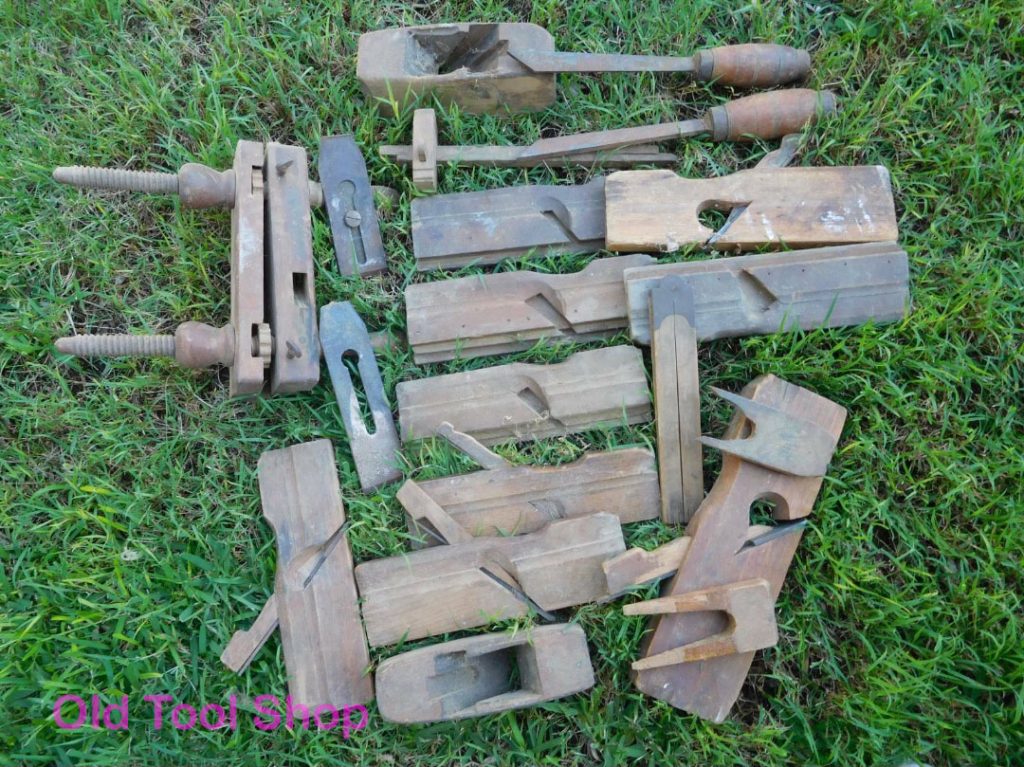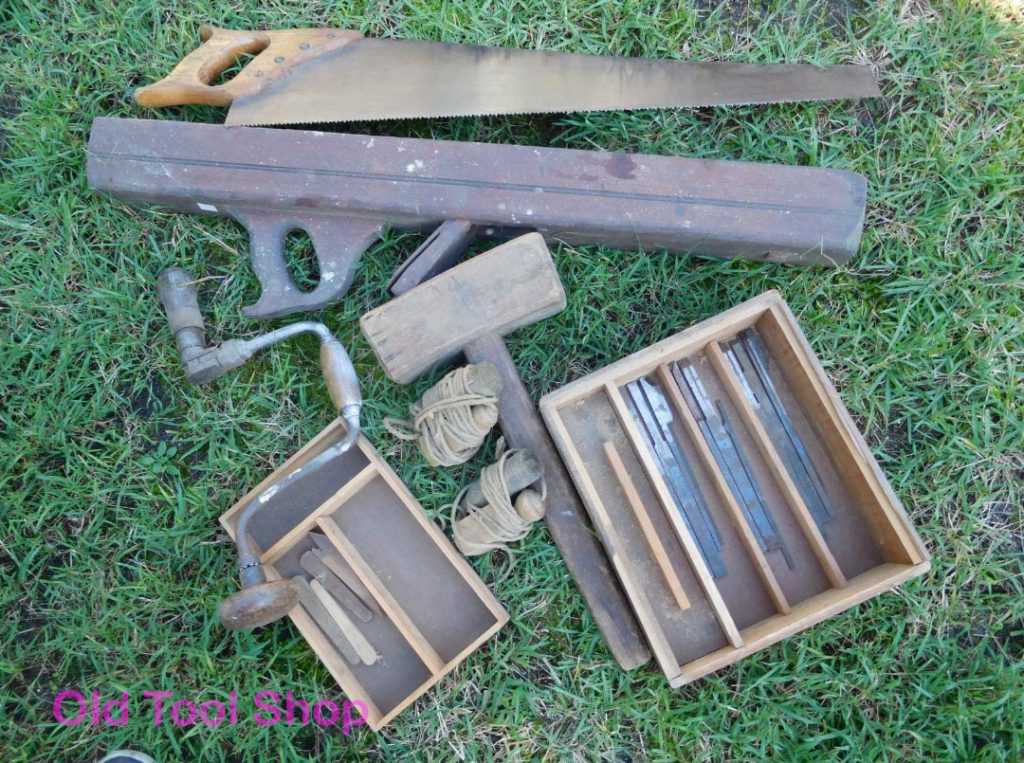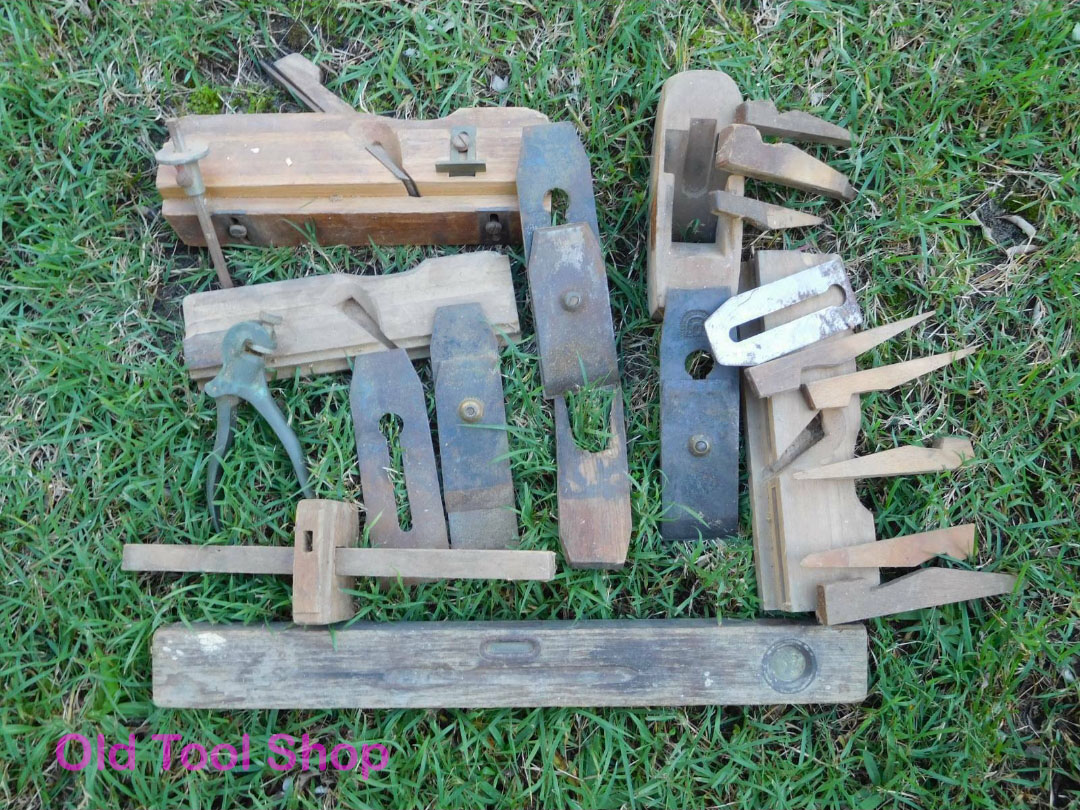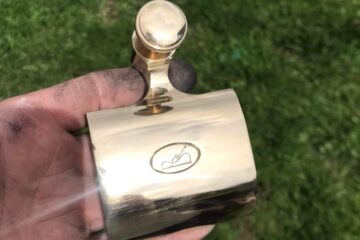I always keep an eye on local sales so when this collection of Dutch tools went up for sale in my local area you can imagine my excitement.
Tools as found


Background
When I arrived these tools were handed over in a wheelbarrow. I had negotiated a reduced price, but on repacking the tools into the boot of my car I realised there were potentially some nice tools in there so I paid the man’s full asking price. The man, Harry, told me the tools were his father’s and for sentimental reasons he had held onto them, but even after years of storage he still couldn’t bring himself to actually use them. I told him I knew something about his father that most people wouldn’t know, just from our short conversation. Most of tools were clearly Dutch to me, so it was easy to explain to Harry why I’d guessed his father’s nationality. I reassured Harry that the tools would be looked after and be going to a home where they would be loved.
After getting these tools home I set about trying to match irons and wedges to planes (no easy task when there were so many) and trying to decipher their makes and ages.
Most of the tools were in excellent condition with the blades only requiring gentle sharpening and honing. The woodwork was sound, but grubby with some minor paint splashes here and there. Interestingly almost all the irons (including chisels) were sharpened with a bevel on the face. Some had more wear on the face than others. I don’t know if this sharpening was to correct surface corrosion, to handle harder woods or because Harry’s father had been taught that way. Either way I didn’t see it as a big problem as they were flat across the cutting edge and only a minor polish away from shining.
Nooitgedagt History
Most of the planes and chisels were the JNiJ brand which was an excellent Dutch company established by Jan Jarigs Nooitgedagt. These guys started making metal ice skates around 1865 in the Dutch town of IJlst. In 1875 the facory progressed into making woodworking tools and homewares. They soon gained a reputation for making quality tools and this became their main business. They didn’t start making chisels until after 1900.
It is said that Nooitgedagt used the highly prized Eskilstuna steel from Sweden, but I have not been able to confirm this. It is documented that they sold large quantities of chisels to Sweden until the early 1990s and that the company was eventually sold to Record in 1998.
Although the Company continued producing tools until the 21st century the quality of their woodworking tools dropped off and this damaged their reputation. This may have only occurred after the sale of the company, but reputations are fragile things. If you find a vintage tool stamped JNiJ or just J.N as shown below, don’t pass over it. They are quality tools and will serve you well.
Restoration Results
I set about restoring the tools from the Dutch collection and the following pictures show how they turned out.













This photograph shows you the sympathetic work that goes into restoration. We don’t try to make the tools shine. We just want them to be clean and loved. Not bad for two chisels comfortably over 100 years old.
Conclusion
I was delighted to find these tools and to have the honour of owning them (even if only for a short while). I love the restoration process and learning more about them and their history. Now I have to decide which I will keep and which I sell. Oh, the dilemma!




0 Comments